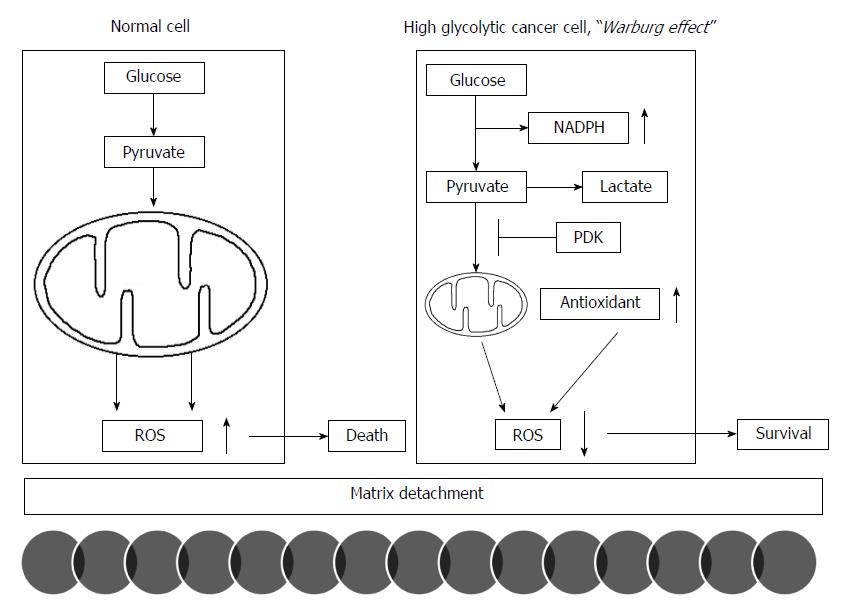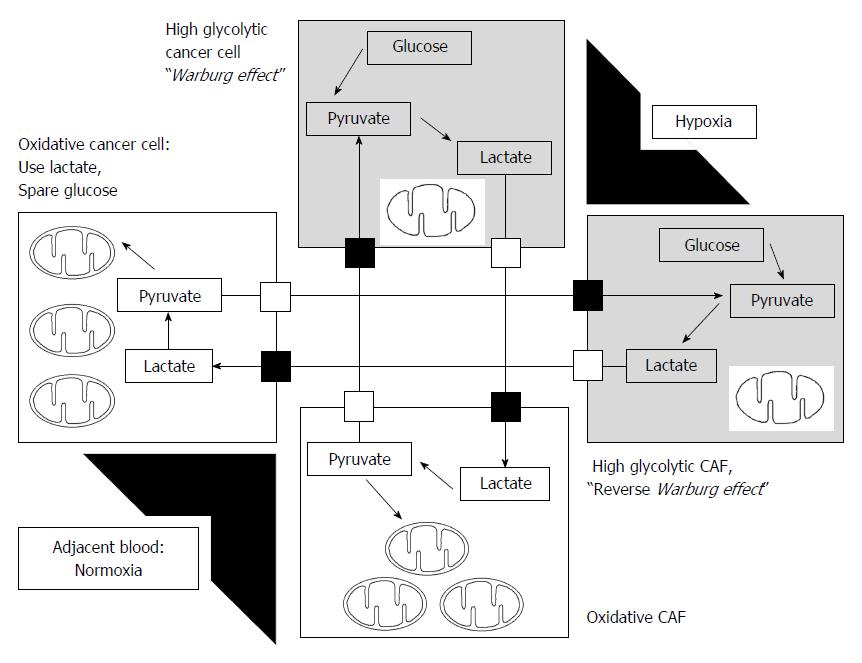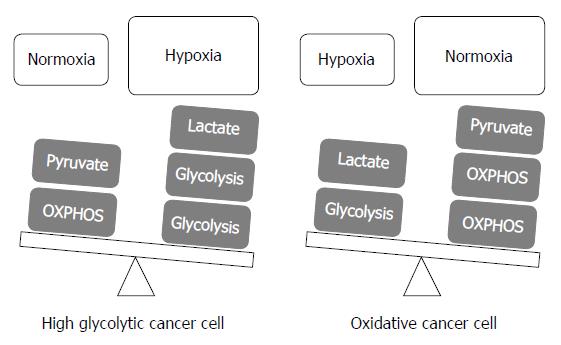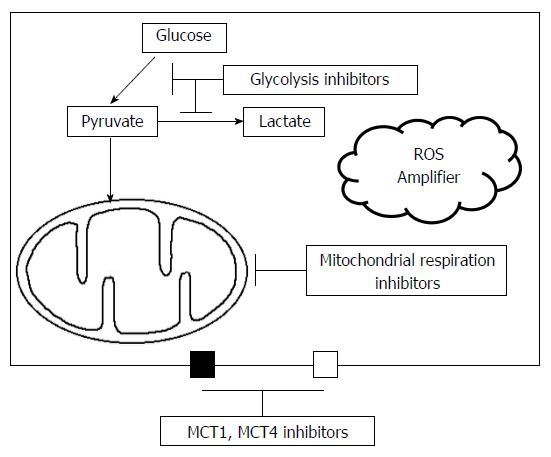Copyright
©The Author(s) 2015.
World J Biol Chem. Aug 26, 2015; 6(3): 148-161
Published online Aug 26, 2015. doi: 10.4331/wjbc.v6.i3.148
Published online Aug 26, 2015. doi: 10.4331/wjbc.v6.i3.148
Figure 1 The Warburg effect contributes to the initiation of tumor metastasis by lowering intracellular reactive oxygen species levels.
After matrix detachment, cancer cells decrease intracellular ROS levels through inducing enzymes involved in the glycolysis and antioxidant systems for their survival. The Warburg effect is strongly linked with modulation of ROS system. PDK: Pyruvate dehydrogenase kinase; ROS: Reactive oxygen species.
Figure 2 Metabolic interplay between high glycolytic cells and mitochondrial OXPHOS cells via lactate shuttle: the black box indicates monocarboxylate transporter 1, and the white box indicates monocarboxylate transporter 4: The gray zone means the hypoxic condition.
Through MCT1 and 4, energy metabolites such pyruvate and lactate go in and out between glycolytic and oxidative cells: two roles of energy fuel and maintenance for acid-base balance in tumor microenvironment. MCT: Monocarboxylate transporters; CAF: Carcinoma associated fibroblast.
Figure 3 Metabolic flexibility of cancer cells depends on the tumor microenvironment: metabolic changes according to oxygen gradients.
In hypoxic condition, glycolysis mainly contributes to produce ATPs with lowering reactive oxygen species production, thereby closely links with initiation of metastasis. In normoxic condition, mitochondrial oxidation more contributes for energy production than glycolysis. For survival, cancer cells adjust to dynamic changes between hypoxia and normoxia in tumor microenvironment. OXPHOS: Oxidative phosphorylation.
Figure 4 Potential therapeutic targets in metabolic interactions are suggested.
A combination therapy might be promising; two targets that block the glycolysis and mitochondrial oxidative phosphorylation or block the glycolysis pathway and amplify ROS levels. Combination treatments targeting both the glycolysis and mitochondrial oxidation, or antioxidant systems can efficiently suppress energy production, or induce ROS-mediated apoptosis. ROS: Reactive oxygen species; MCT: Monocarboxylate transporters.
- Citation: Lee M, Yoon JH. Metabolic interplay between glycolysis and mitochondrial oxidation: The reverse Warburg effect and its therapeutic implication. World J Biol Chem 2015; 6(3): 148-161
- URL: https://www.wjgnet.com/1949-8454/full/v6/i3/148.htm
- DOI: https://dx.doi.org/10.4331/wjbc.v6.i3.148
















